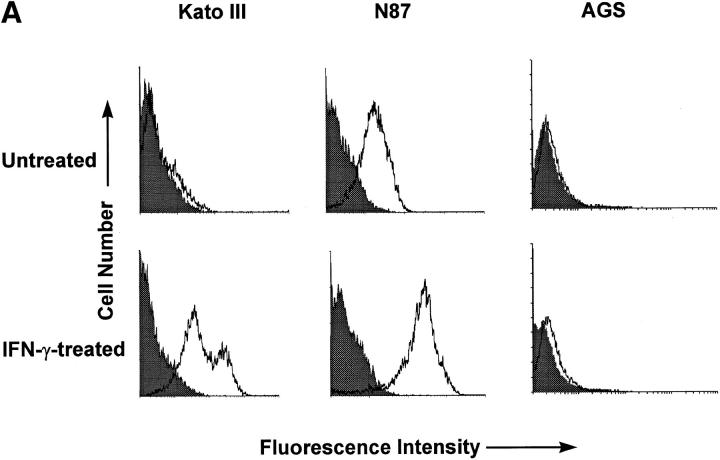Figure 3.
Binding of H. pylori to the surface of gastric epithelial cells. To determine if the binding of H. pylori was associated with the increased expression of class II MHC molecules, Kato III, N87, and AGS cells were assayed for class II MHC expression before (filled curves) or after (open curves) stimulation with IFN-γ (A). Subsequently, Kato III, N87, and AGS cells were cultured with or without IFN-γ (100 U/ml) for 48 h, washed, and incubated with H. pylori for 2 h at 4°C. Cells were then labeled with anti–H. pylori antisera as described in Materials and Methods and evaluated by flow cytometry. Data (B) are presented as the percent mean fluorescence intensity of cells treated with IFN-γ compared with those treated with media alone. There was significantly increased fluorescence, indicating more H. pylori binding to Kato III and N87 (*P <0.05 compared with control cells) but not to AGS cells. Inset, Fluorescence histogram that was typical for the binding of bacteria to Kato III or N87 cells. The results are representative of three separate experiments. (C) Kato III cells were cultured with IFN-γ (100 U/ml) for 48 h, pretreated with a cocktail of anti–MHC II antibodies (Blocked) or an irrelevant antibody (Unblocked), and evaluated for H. pylori. Isotype, The background fluorescence of Kato III cells with H. pylori and the isotype control for the binding assay. Representative of two separate experiments.



